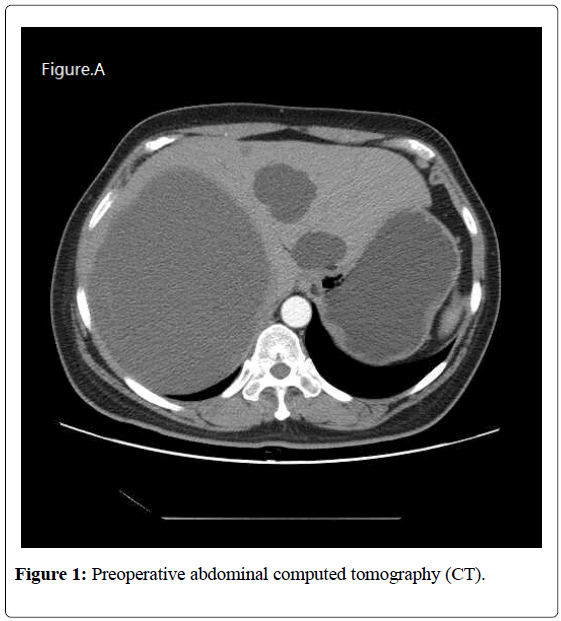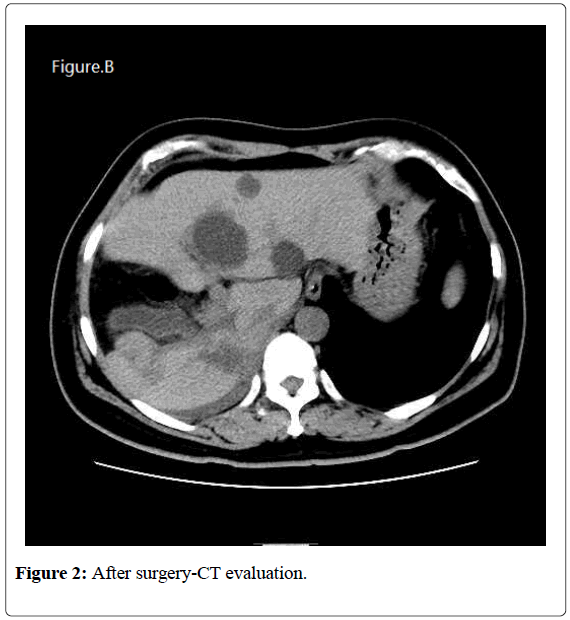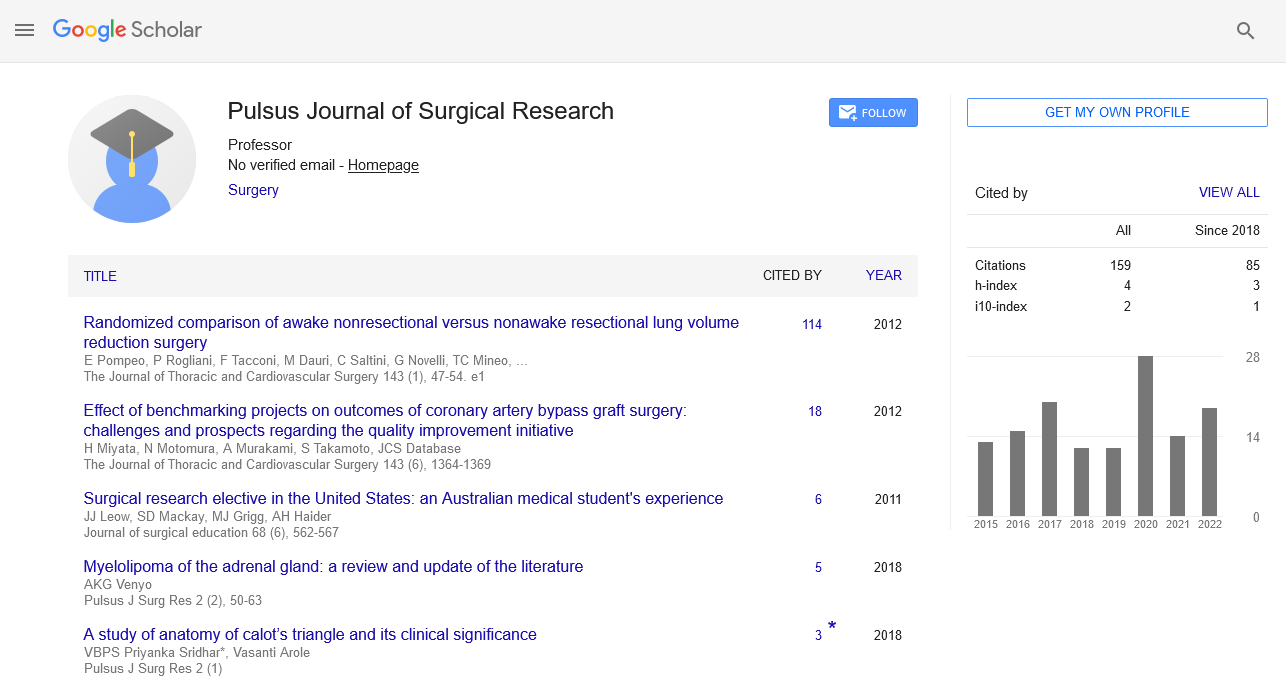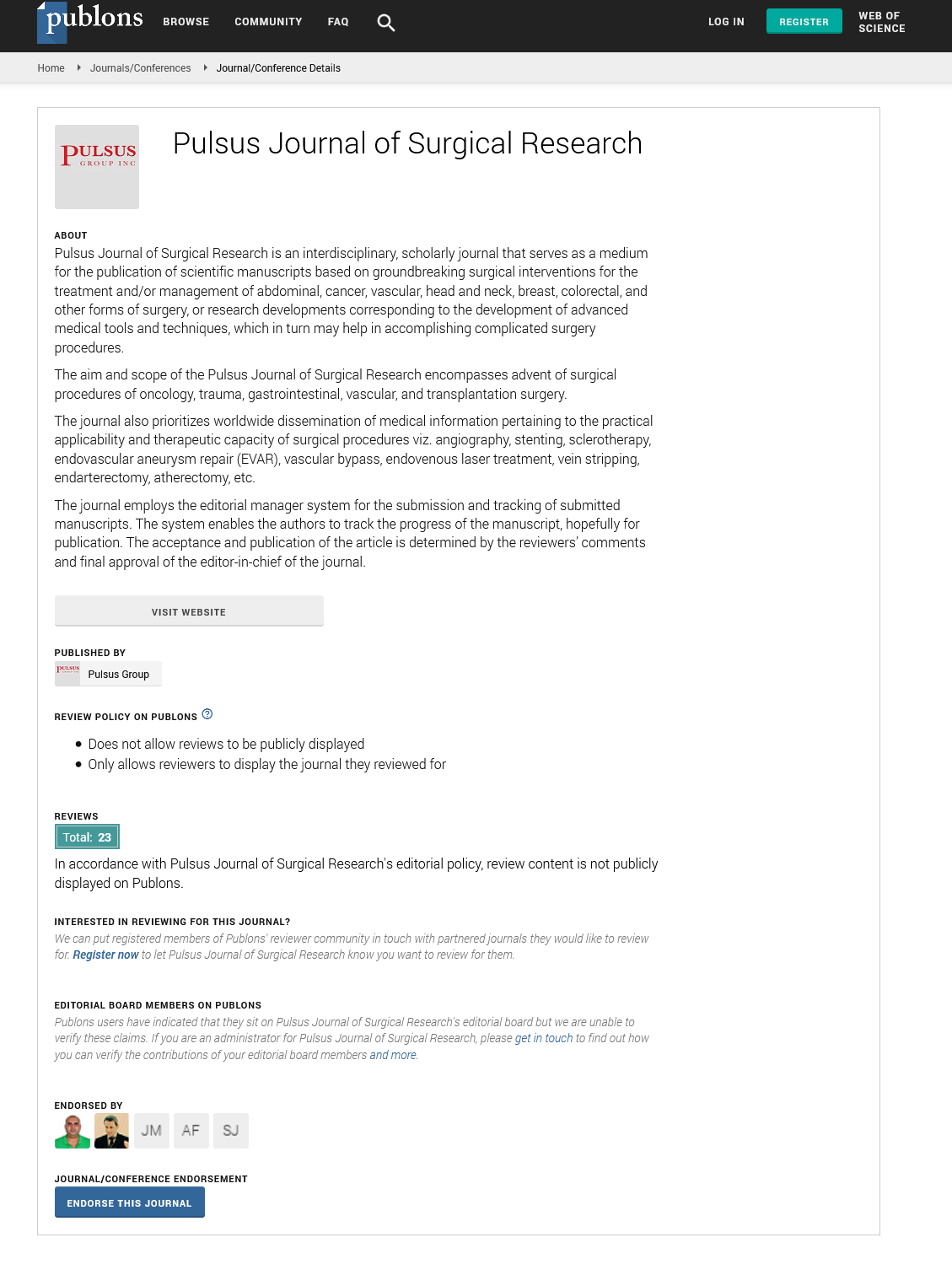Targeted cyst-deroofing for symptomatic polycystic liver disease
Received: 10-Oct-2017 Accepted Date: Oct 27, 2017; Published: 31-Oct-2017
Citation: Lu J, Jia Z, Zhang J, Kong CJ. Targeted cyst-deroofing for symptomatic polycystic liver disease . Pulsus Journal of Surgical Research. October-2017;1(1):10.
This open-access article is distributed under the terms of the Creative Commons Attribution Non-Commercial License (CC BY-NC) (http://creativecommons.org/licenses/by-nc/4.0/), which permits reuse, distribution and reproduction of the article, provided that the original work is properly cited and the reuse is restricted to noncommercial purposes. For commercial reuse, contact reprints@pulsus.com
Abstract
Preoperative abdominal computed tomography (CT) (Figure 1) supported the diagnosis of polycystic liver disease (PLD). PLD is a genetic disorder usually combined with autosomal dominant polycystic kidney disease, with symptoms arising from enlarged liver and compression of adjacent structures. Highly symptomatic patients are suitable for surgical interventions.
Image Article
A 48-year-old woman suffered from discomfort of early satiety more than 1 month before admission.
Preoperative abdominal computed tomography (CT) (Figure 1) supported the diagnosis of polycystic liver disease (PLD). PLD is a genetic disorder usually combined with autosomal dominant polycystic kidney disease, with symptoms arising from enlarged liver and compression of adjacent structures. Highly symptomatic patients are suitable for surgical interventions. Therapeutic option varies according to extent of disease, classification of cysts, cystic distribution and patients' general condition as well. Whenever safety, efficacy and risks under control are first. In practice, aspiration with sclerotherapy may be chosen for patients with poor general condition or central cyst. Liver transplantation might be considered for patients with a “syndrome of lethal exhaustion” from PLD. Hepatic resection and/or deroofing of cyst-targeted are favourable for the other majority. Of note, inappropriate option or excessive procedures may bring counterproductive outcomes such as irreversibly bleeding and live failure. In this case, two massive cysts' roofs were excised by laparoscopic technique. On follow-up at clinic, half a year after surgery, no surgeryrelated complications and no evidence of recurrence were found by further CT evaluation (Figure 2).
Figure 1: Preoperative abdominal computed tomography (CT).








